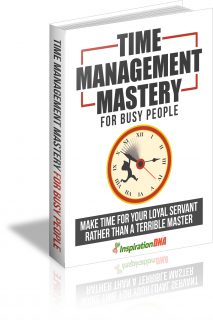 License Type: Master Resell Rights
License Type: Master Resell Rights  File Type: ZIP
File Type: ZIP
 SKU: 61434
SKU: 61434  Shipping: Online Download
Shipping: Online Download
Sample Content Preview
Foreword
Having a PDA, or utilizing additional technology, won't automatically make you more efficient. It might take you a long time to get used to utilizing it to help you manage your time. And then you'll have to make a habit of utilizing it. It may work as well as any paper-based scheme, if you take the time to learn how to utilize it correctly, and it has the benefits of compactness, the power to search for words and phrases, the power to store crucial documents, and so on. However, without acquiring the right habits in utilizing it, it may as well be a brick. Lastly, you might discover that the correct system for you is a hybrid one: maybe you use your PDA for Appointment and Contact management and a paper planner for jobs and projects ... Maybe another combination. My goal herein isn't to sell you on having a PDA but to show what you are able to do with one, so you are able to try it out and see if it's good for you.
Time Management Mastery For Busy People
Make time your loyal servant rather than a terrible master.
Chapter 1:
Where Do You Spend Your Time
A key to bettering your time management skills is to discover how you're expending your time. It's simple to utilize your PDA or PC for this. Simply set up a time log.
Choose Wisely
The sort, Importance, Effectiveness, and Efficiency fields are picked out from pop-up lists that have the accompanying values:
Sort - Family, Personal, Business, Other Importance - 1 (crucial and pressing), 2 (Important, not pressing), 3 (Not significant, but pressing), 4 (Not crucial, Not pressing)
Effectiveness - 100%, 90%, 80%, 70%, 60%, 50% or less
Efficiency - 100%, 90%, 80%, 70%, 60%, 50% or less
The first time I utilized a time log, many years ago, I was truly shocked at how much time I was squandering. To truly get value out of it, you ought to utilize it for at least 3 typical days (not weekend days). Then you ought to study it to see where you are spending time ineffectively. A different useful log that you are able to track in a database on your Pocket PC/Palm is one that seizes Rework actions. Such actions are those that you need to re-do something on.
An easy example is that you formulate a set of demonstrations and then need to rework it to address your boss's remarks. To get value out of this sort of log, you ought to utilize it for at least 3 weeks -- occasionally rework doesn't come out till a couple of weeks after the initial action. You are able to acquire a lot of efficiency by confronting those areas where you've the most rework.
Once you have to pick among many tasks, there are a lot of prioritization tools you are able to utilize. If you're in a rut with your prioritization technique, trying out different techniques might yield the one that's correct for you.
Note that it's generally accepted that 20% of your actions will account for 80 percent of your success (The Pareto Principle). Therefore, if you've a hundred tasks in your job list, likely about twenty of those will be the key ones to center on. Therefore, whatever prioritization technique you utilize, you ought to ensure it helps you pinpoint these tasks.
Stephen Covey names a high-level prioritization scheme in his book The Seven Habits of Highly Effective People. In that scheme, jobs are categorized by 4 quadrants:
* QI - crucial and pressing
* QII - crucial but not pressing
* QIII - Not significant but pressing
* QIV - Not significant and not pressing
Dr. Covey mentions that highly effective individuals make time for the QII actions, and that doing so may reduce the time spent in extra quadrants. Though QI - QIV prioritization doesn't help you choose which QI activity to accomplish first and which to accomplish second, and so on, it may be really informative to discover which quadrants your tasks are in.
The ABC technique
I first became cognizant of this strategy when I utilized a paper-based Franklin planner. It ranks tasks into 3 categories:
A = critical
B = significant
C = nice
Then it subdivides tasks in these classes into A1, A2, A3, ..., B1, B2, ... And so on. Notice that the A, B, C categories have an aboveboard correspondence to Quadrants I, II, and III discussed in Covey's book. Many individuals discover this prioritization technique to be really helpful. While the standard Pocket PC and Palm Task list application doesn't support these precise priorities, there are a few really good 3rd party applications that do. For instance, Pocket Informant and Agenda Fusion for the Pocket PC support prioritization and impart a number of additional valuable capabilities.
- License: Master Resell Rights
- Tags:2017 Ebooks Master Resale Rights








